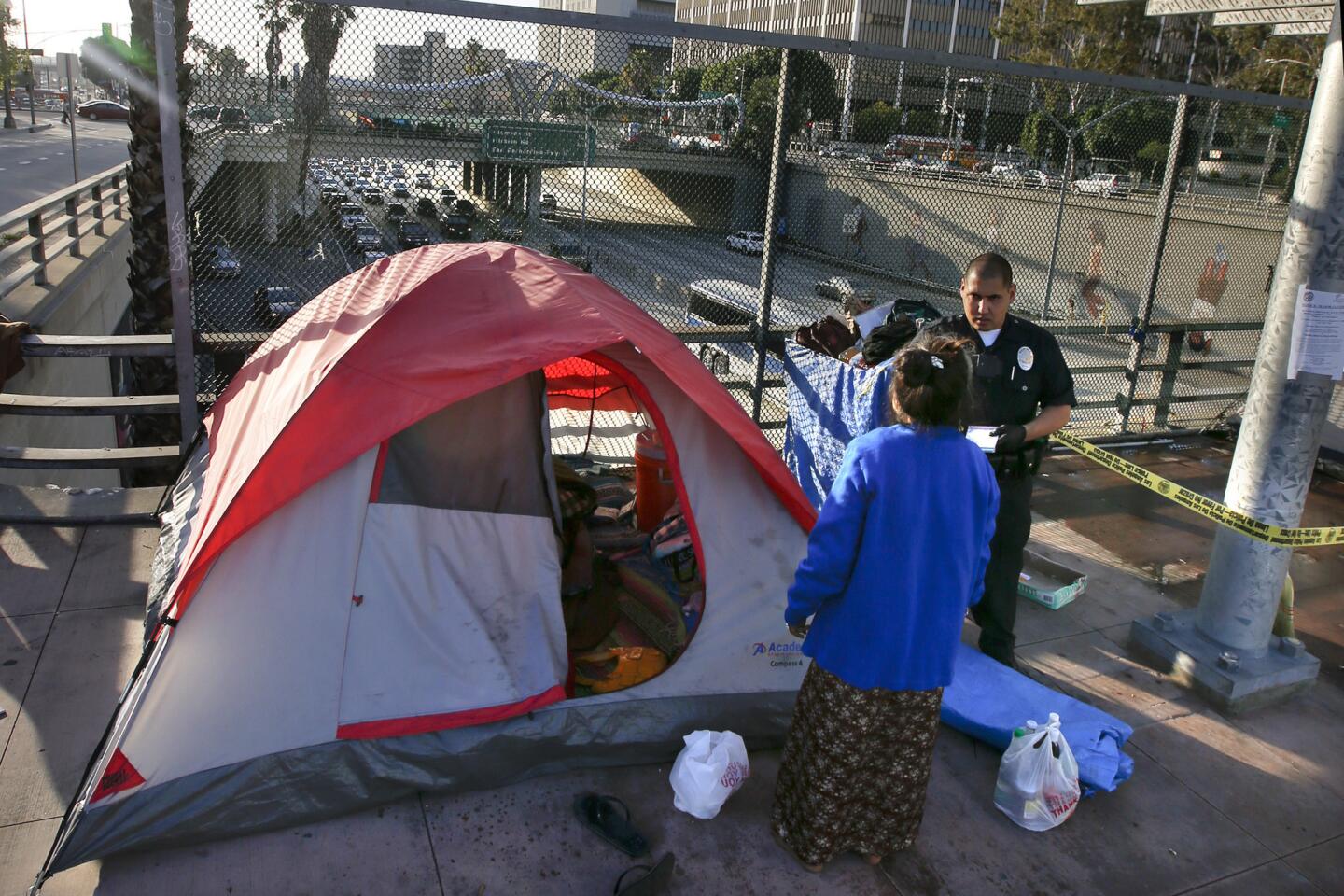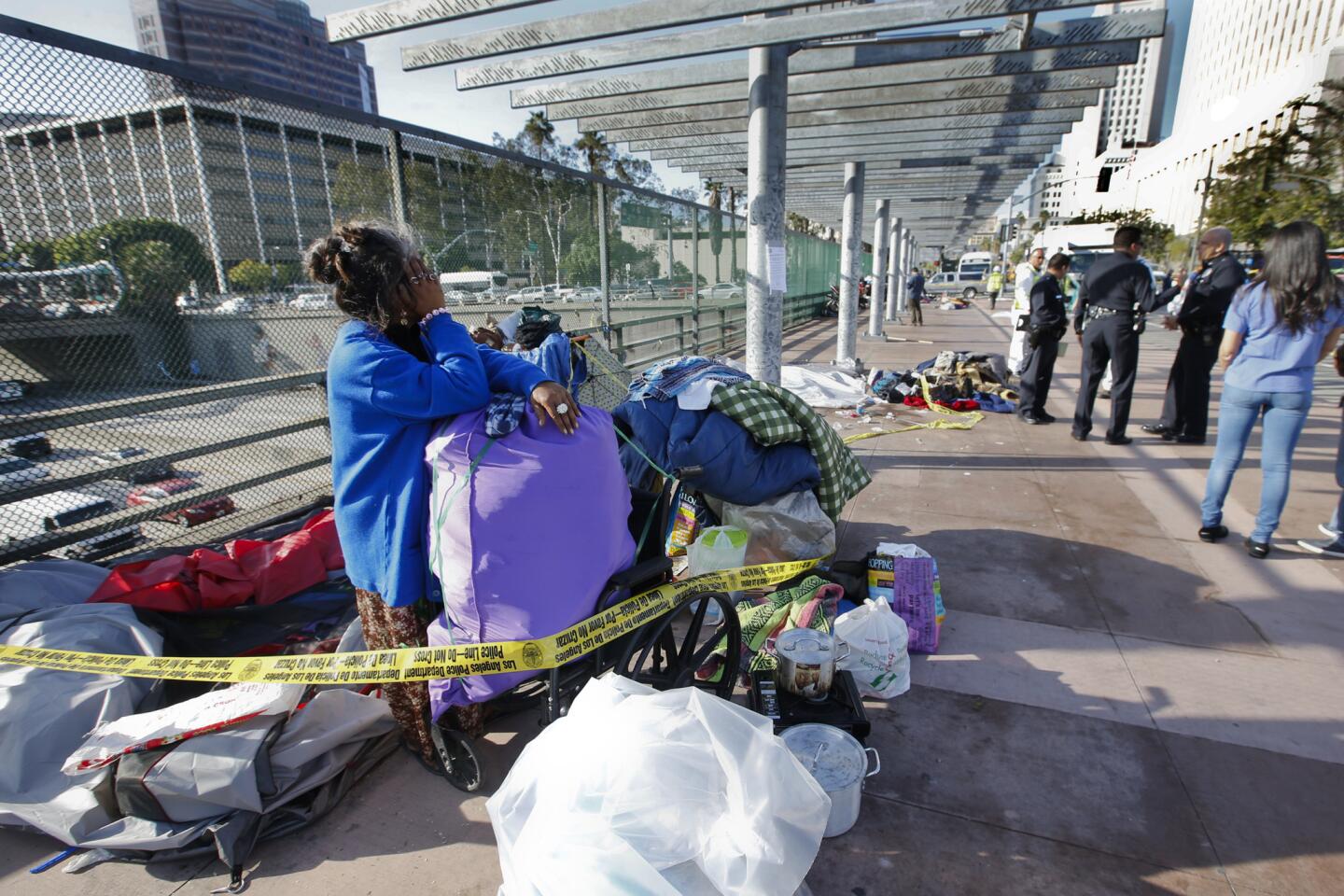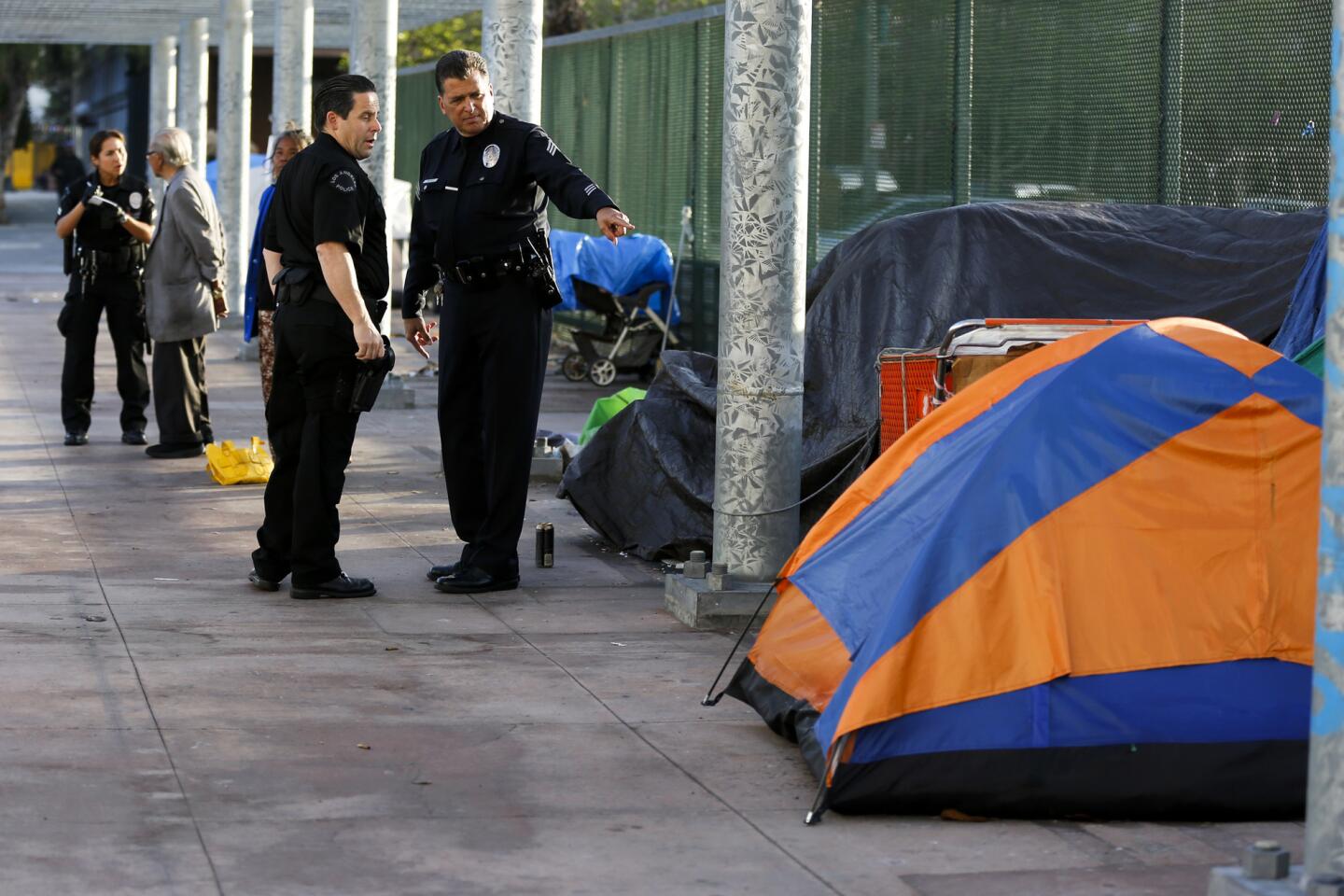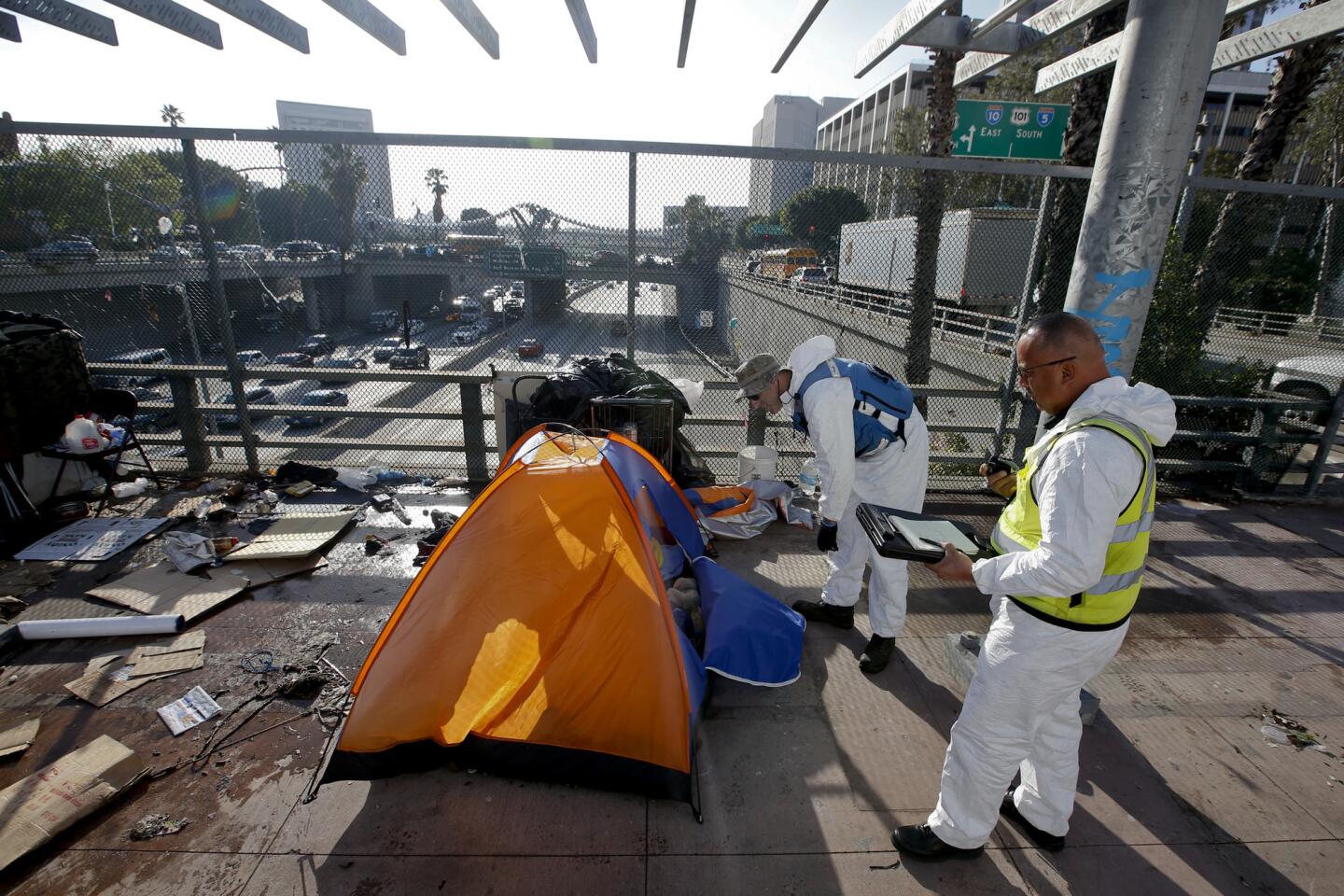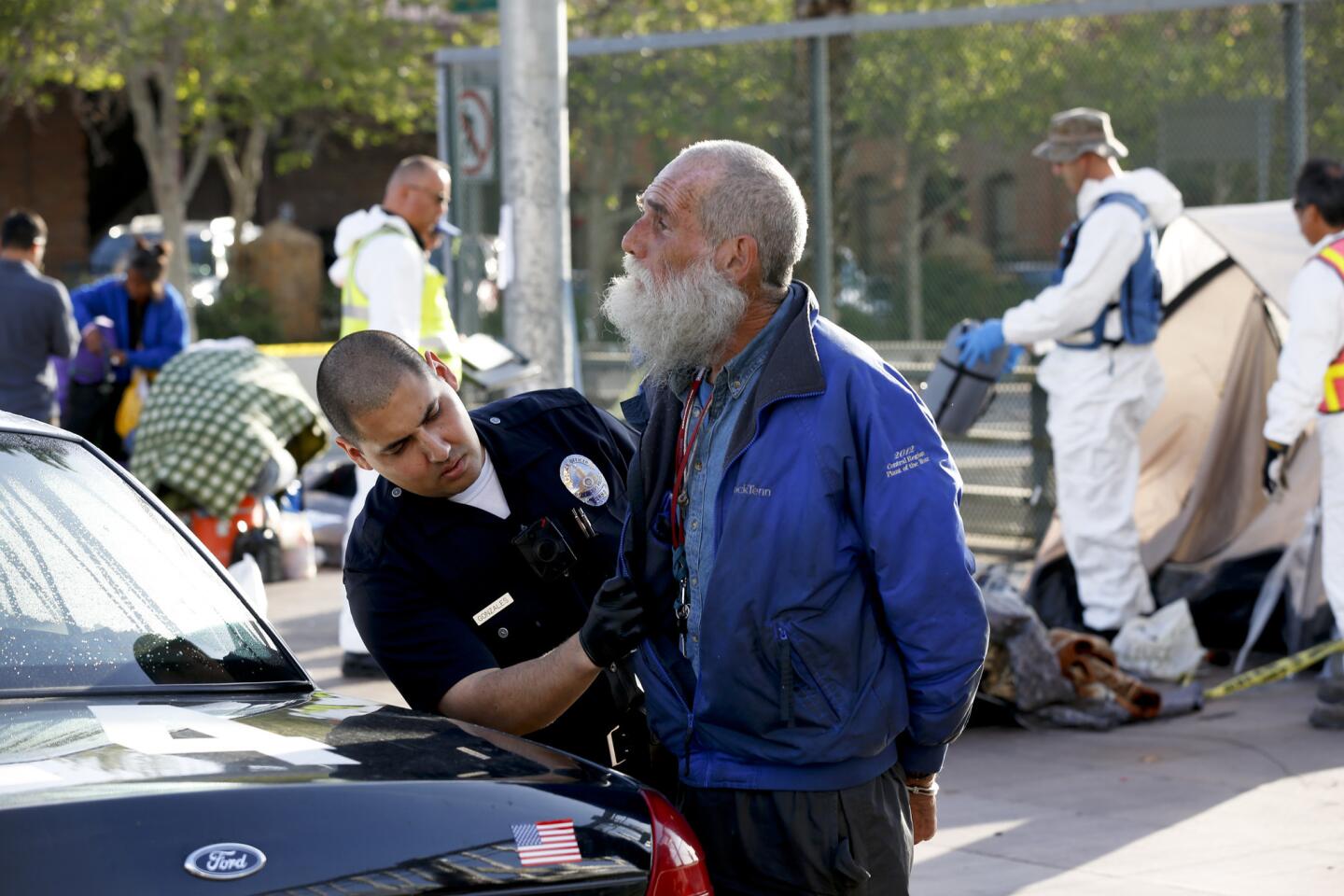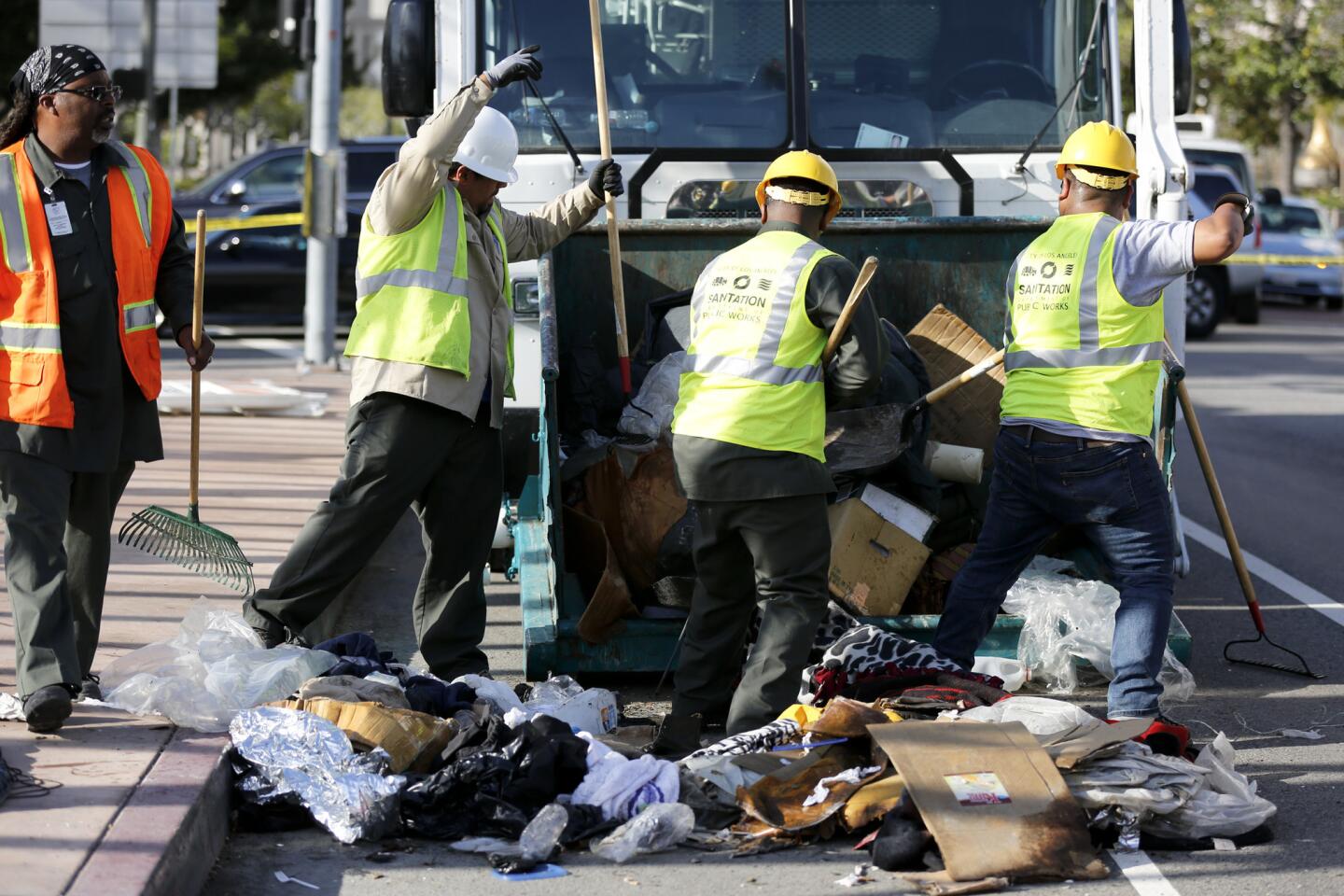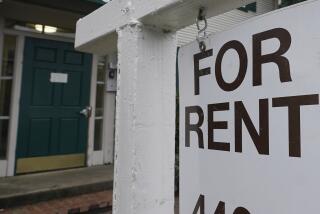Subsidized rent, but nowhere to go: Homeless vouchers go unused
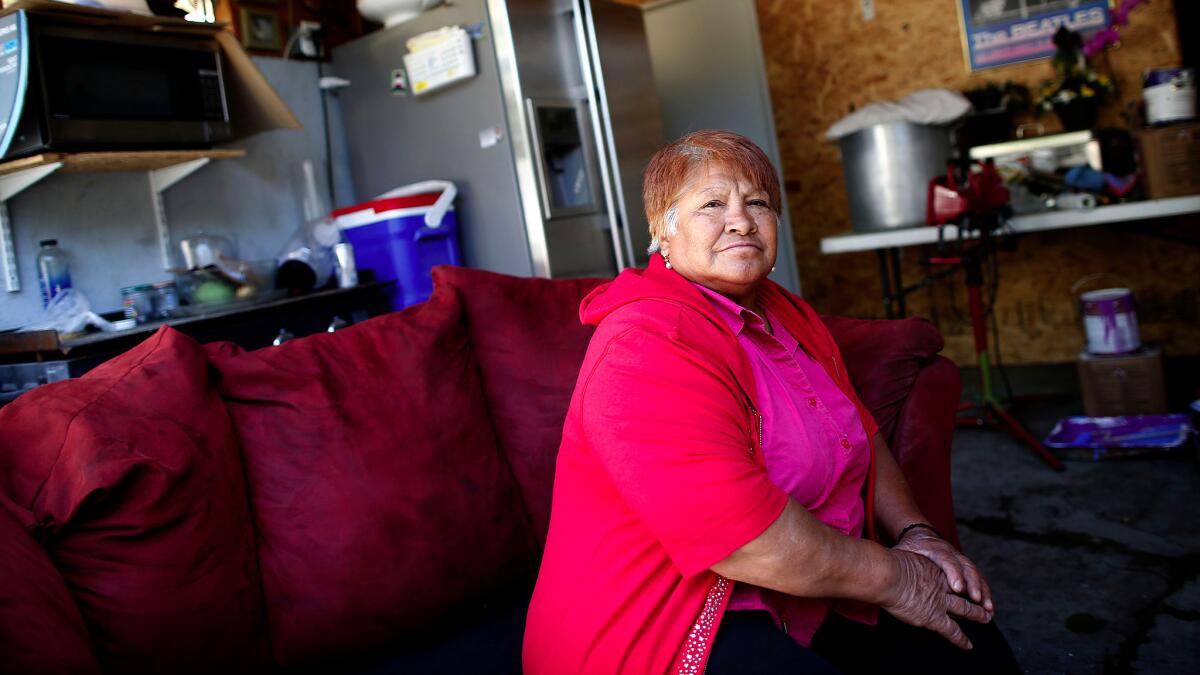
Nine years after she lost her apartment in North Hollywood and began couch-surfing and living in her van, Laura Luevano received a federal rent voucher to return her to the world of the housed.
Two months later â after calling 23 apartments for rent with no luck â the 65-year-old disabled woman is sleeping on a cramped couch on a back patio in Sylmar, one of at least 2,200 homeless people in Los Angeles County with a voucher but no place to use it.
With more than 35,000 people sleeping on sidewalks and in alleys, underpasses and riverbeds, the city and county are leaning on rent subsidies for private landlords to bring quick relief to homeless people while elected officials struggle to fund a $1.87 billion construction program.
But in the last two years, rents have soared far above baseline federal voucher caps â $1,150 for a one-bedroom apartment and $1,500 for two-bedroom units. And with the countyâs rental vacancy rate at a scant 2.7%, voucher holders are tripping over one another in fruitless apartment hunts lasting months.
âA lot of people think once you have a voucher, thatâs it, you have some golden ticket,â said Michelle Solis, Luevanoâs case worker at Housing Works, a Hollywood-based homeless housing services provider. âBut itâs not. You have to compete with everyone else.â
NEWSLETTER: Get the dayâs top headlines from Times Editor Davan Maharaj >> >>
The city and county are trying to lure more landlords into taking vouchers with financial incentives to sweeten the deal.
âWe only have a limited number of tools: We can build new housing, we can rehab housing. The rest of it is we have to use existing private housing,â said County Supervisor Sheila Kuehl.
The city has set aside $5 million, and the county $3 million, to cover security deposits and first and last monthâs rent, set up damage funds and pay initial water and power bills for formerly homeless voucher holders.
Some local governments also pay for $1,000 holding fees to tide over landlords while inspections and approvals are underway; a new program in Santa Monica offers a $5,000 signing bonus to landlords who rent to voucher holders.
But some landlords fear formerly homeless tenants will cause trouble or fall behind on rent. Subsidies are issued through a variety of programs to homeless and low-income people, but generally, tenants contribute 30% of their income, leaving the government to cover the rest.
Veteransâ families with vouchers in hand are taking four months to find housing; for single adult veterans, the wait is eight months.
âThere are about 800 homeless veteran vouchers wandering the streets of Los Angeles looking for apartments,â said Philip Mangano, the former federal homelessness czar under President George W. Bush.

Work crews and police remove homeless encampments along a highly visible stretch of the 101 Freeway downtown Los Angeles.
In addition to the financial lures, officials launched campaigns to educate landlords about the benefits of vouchers â guaranteed rent, close supervision by case managers and mediation of tenant problems. And theyâre appealing to their sense of civic responsibility and, in the case of veterans, patriotism.
âMany landlords, even in this competitive market, when they find out their rent is going to be more consistent than in the regular market, they sign on,â said Alisa Orduna, Mayor Eric Garcettiâs homelessness deputy. âWe have to hook them in.â
At a recent meeting of landlords in Van Nuys, the pitch met with mixed results.
Alan Bernstein, who runs a residential property management company that manages or owns 500 units, said he wants to help alleviate homelessness but has held back because of the lengthy documentation and inspection process.
âYouâre keeping units off the market longer than you would have to when youâre renting directly to the tenant,â Bernstein said.
âWith the homeless, there are also concerns about ⌠making sure that theyâre not doing anything that would cause concern for their neighbors,â he said.
Melissa Aardema, who rents out several townhouses in the Lancaster area to voucher holders, said the guaranteed rents overrode her fears of trouble with tenants.
âI know that Iâm getting my check deposited every month, and for that Iâm thankful, and Iâm thankful that I can teach our kids and our other family members the importance of giving back to the community,â Aardema said.
But in gentrifying downtown Long Beach, landlords are pulling out of the voucher program altogether, forcing tenants out, said Alison King of the cityâs housing authority.
Pasadena, meanwhile, has quit receiving voucher referrals because there is nowhere to take them, said Anne Lansing, project planner for the city.
The federal government is also stepping in to ease the voucher housing shortage.
The U.S. Department of Veteran Affairs covers move-in costs for veterans, and the Department of Housing and Urban Development plans to set rent caps by ZIP Code instead of metropolitan area, bringing allowable lease payments more in line âwith reality,â spokesman Ed Cabrera said.
Santa Monicaâs rent caps already were raised to about $1,900 for a one-bedroom apartment. But the money set aside for vouchers didnât grow, meaning fewer people may get help, said Santa Monica housing administrator Jim Kemper.
Kemper also noted that people with vouchers are competing against other poor people for the same scarce low-rent units.
Mollie Lowery of Housing Works said local governments need to do more, including opening year-round, 24-hour shelters and working on homelessness prevention.
Lowery said her agency recently had to get a lawyer to stop a landlord who said he was leaving the voucher program from evicting two elderly sisters from a rent-controlled building in Los Angeles.
âWhy didnât the housing authority know that, or why didnât they tell them?â she asked.
The city of L.A.âs housing authority helps tenants prevent illegal evictions, including with referrals to legal aid groups, said Carlos VanNatter, director of the authorityâs voucher program.
Solis said she wonders if officials understand how difficult it can be to unravel the tangled lives of clients like Luevano so they can get housing.
Luevano developed diabetes and arthritis, and a stubborn leg wound had her in and out of the hospital six to seven times last year, Solis said. She pays $200 of her $300 disability check â Solis is trying to help her raise the amount â to sleep on the Sylmar patio, amid the ownerâs dogs and stored belongings.
She can sleep inside when itâs cold, and use the kitchen and bathroom, but is expected to leave in the daytime, when she jots down information on room-for-rent signs and visits parks, McDonaldâs and the library. She recently had to leave her van in North Hollywood because it was overheating.
âI feel as though time is flying by and Iâm not getting anywhere,â Luevano said, her eyes filling with tears.
Luevano has an appointment Wednesday to see an apartment in the Crenshaw district.
Two other voucher holders are vying for the same unit, Solis said.
ALSO
California Latino Republicans see Prop. 187âs ghost in Trumpâs campaign
O.C. beach evacuated after woman injured in possible shark attack
Spending by special interest groups reaches record levels to influence California legislative races
Twitter: @geholland
Twitter: @sewella
More to Read
Sign up for Essential California
The most important California stories and recommendations in your inbox every morning.
You may occasionally receive promotional content from the Los Angeles Times.
